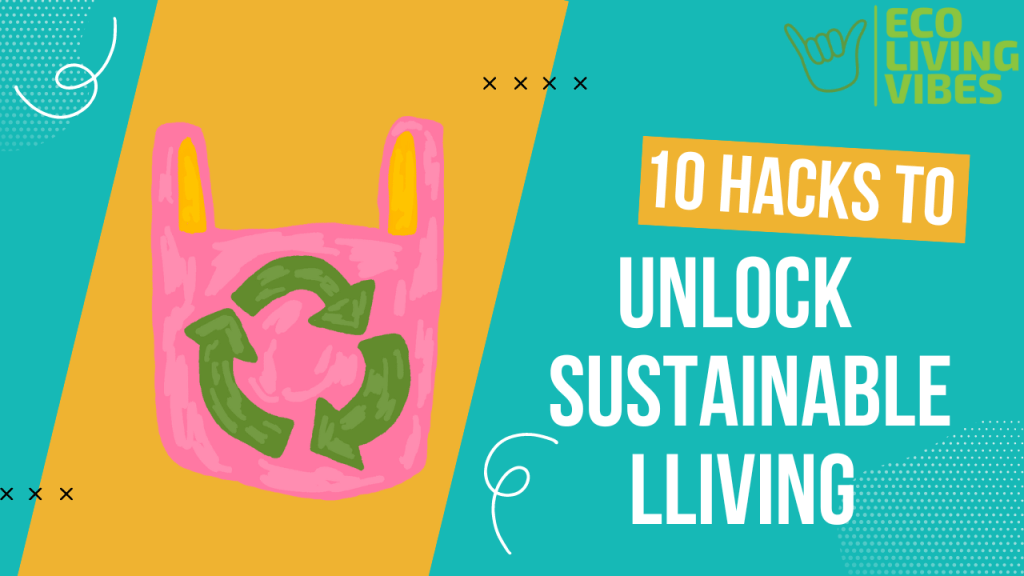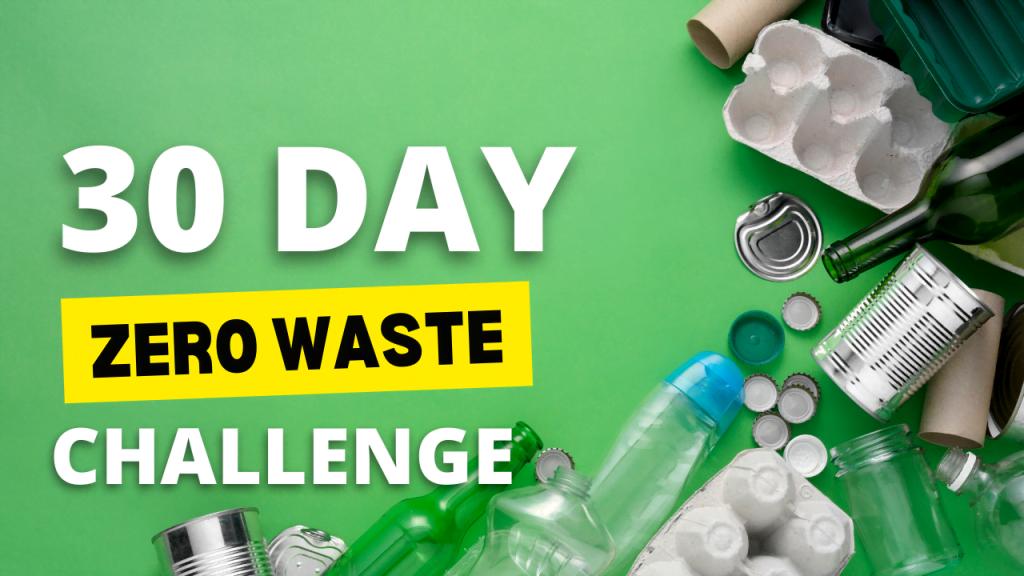Welcome to an exhilarating journey through 75 mind-blowing facts about sustainability that will leave you saying, “Wow, I never knew that!”
Get ready to be amazed, inspired, and energised as we delve into the fascinating world of sustainable practices, environmental impact, and green living.
From shocking statistics to eye-opening discoveries, these lesser-known facts about sustainability will reshape your perspective and ignite your passion for creating a brighter, greener future.
So, put on your curiosity hat and join us as we uncover these awe-inspiring facts that will leave you empowered and ready to make a positive change in the world of sustainability.

Here are the 75 facts about the environment, sustainability, and green living divided into 7 different categories:
Waste and Recycling
- The average person in the United States generates about 4.5 pounds (2 kilograms) of waste per day.
- Approximately 80% of the products we buy end up in landfills within six months of purchase.
- It takes about 500 years for a plastic bottle to decompose in a landfill.
- Recycling one aluminium can saves enough energy to power a TV for three hours.
- The recycling rate for plastic in the United States is only around 9%.
- Recycling one ton of paper saves about 17 trees and 7,000 gallons (26,500 litres) of water.
- The energy saved from recycling one glass bottle can power a light bulb for four hours.
- Landfills are the third-largest source of methane emissions globally.
- Recycling one ton of cardboard saves 9 cubic yards of landfill space.
- E-waste is the fastest-growing waste stream globally, increasing by 21% every year.
Plastic Pollution
- Over 8 million metric tons of plastic enter the world’s oceans each year.
- The production of one plastic water bottle requires approximately 17 million barrels of oil.
- The amount of plastic produced in the last 10 years exceeds the amount produced during the entire 20th century.
- By 2050, there could be more plastic in the oceans than fish by weight.
- Over 90% of the world’s seabirds have plastic in their stomachs.
- Approximately 70% of micro-plastics in the oceans come from synthetic textiles.
- The amount of plastic micro-fibers released into the oceans each year is equivalent to 50 billion plastic bottles.
- Bees are responsible for pollinating about one-sixth of the flowering plant species worldwide.
- Over 1 million seabirds and 100,000 marine mammals die each year due to plastic pollution.
- Bamboo can be harvested and fully regrown within 3 to 5 years, making it a highly sustainable material.
Climate Change and Energy
- The deforestation of rainforests contributes to approximately 15% of global greenhouse gas emissions.
- The production of meat and dairy is responsible for 60% of agriculture’s greenhouse gas emissions.
- Animal agriculture is responsible for more greenhouse gas emissions than the entire transportation sector combined.
- The melting of the Greenland ice sheet could raise global sea levels by about 20 feet (6 meters).
- A single volcanic eruption can release more greenhouse gases into the atmosphere than human activity does in years.
- Renewable energy sources account for around 26% of global electricity generation.
- The average American uses about 2,200 gallons (8,300 litres) of water per day.
- The construction industry is responsible for about 40% of global energy consumption.
- The use of electric vehicles can reduce greenhouse gas emissions by up to 50%.
- The world’s largest wind turbine has blades longer than a football field and can power 5,000 homes.
Water Consumption and Conservation
- More than 70% of the Earth’s freshwater is used for agriculture.
- It takes 700 gallons (2,650 litres) of water to produce one cotton t-shirt.
- The fashion industry is responsible for about 10% of global carbon emissions.
- Over 90% of the world’s urban population breathes air that exceeds the World Health Organisation’s safe limits.
- The production of one ton of steel emits around 1.8 tons of CO2.
- The average American uses about 100 gallons (379 litres) of water per day for personal and household needs.
- Over 50% of the world’s wetlands have been lost since 1900.
- Organic farming methods can reduce pesticide runoff by up to 97%.
- The production of one cotton crop T-shirt requires about 2,700 litres (713 gallons) of water.
- Over 90% of the world’s fisheries are either fully fished or overfished.
Biodiversity and Conservation
- The Great Barrier Reef, the largest coral reef ecosystem on Earth, has lost half of its coral cover since 1985.
- Over 25% of the Earth’s mammal species are at risk of extinction.
- The global population of wild tigers has declined by more than 95% in the last century.
- Approximately 25% of the world’s freshwater fish are endangered or extinct.
- Forests are home to 80% of the world’s terrestrial biodiversity.
- An estimated 50,000 species go extinct every year due to habitat destruction.
- Approximately 25% of global carbon emissions come from the food system.
- Approximately 35% of global food crops depend on insects for pollination.
- The world’s largest solar power plant, the Bhadla Solar Park in India, covers an area larger than Paris.
- Over 500,000 trees are cut down daily to produce disposable diapers.
Air Pollution and Health
- Indoor air pollution can be up to five times worse than outdoor air pollution.
- Air pollution causes more deaths each year than smoking, malaria, and HIV/AIDS combined.
- The ozone layer, which protects life on Earth from harmful ultraviolet radiation, has been depleted by up to 50%.
- Indoor plants can reduce levels of airborne pollutants by up to 87%.
- The electricity used by idle electronics in the United States can power the entire country of Italy.
- Over 90% of the world’s urban population breathes air that exceeds the World Health Organisation’s safe limits.
- An estimated 35% of micro plastics in the oceans come from synthetic textiles.
- The global population is expected to reach 9.7 billion by 2050, putting further strain on resources and ecosystems.
- The largest dam in the world, the Three Gorges Dam in China, displaced over 1.3 million people during its construction.
- Insects play a crucial role in pollinating crops, with over 75% of global food crops depending on them.
Environmental Impact of Various Industries
- The fashion industry is responsible for about 10% of global carbon emissions.
- The production of one pair of jeans requires about 2,000 gallons (7,600 litres) of water.
- The average shower head in the United States uses about 2.5 gallons (9.5 litres) of water per minute.
- Approximately 17 million barrels of oil are used each year to produce plastic water bottles.
- The energy from the sun that reaches Earth in just one hour is sufficient to meet global energy demands for an entire year.
- The average American spends about 90% of their time indoors.
- The world’s largest landfill, the Fresh Kills Landfill in New York City, covers an area larger than Central Park.
- The amount of plastic micro fibers released into the oceans each year is equivalent to 50 billion plastic bottles.
- The average American uses about 2,200 gallons (8,300 litres) of water per day.
- The production
- The production of meat and dairy is responsible for 60% of agriculture’s greenhouse gas emissions.
- Over 8 million acres of forests are lost worldwide every year.
- Over 1 million seabirds and 100,000 marine mammals die each year due to plastic pollution.
- The average American uses about 100 gallons (379 litres) of water per day for personal and household needs.
- Over 90% of the world’s fisheries are either fully fished or overfished.
- Landfills are the third-largest source of methane emissions globally.
75 Facts About Sustainability. Phew!
These categories provide a comprehensive overview of various aspects of the environment, sustainability, and green living, highlighting the interconnectedness of these issues and the urgent need for action to protect our planet!




